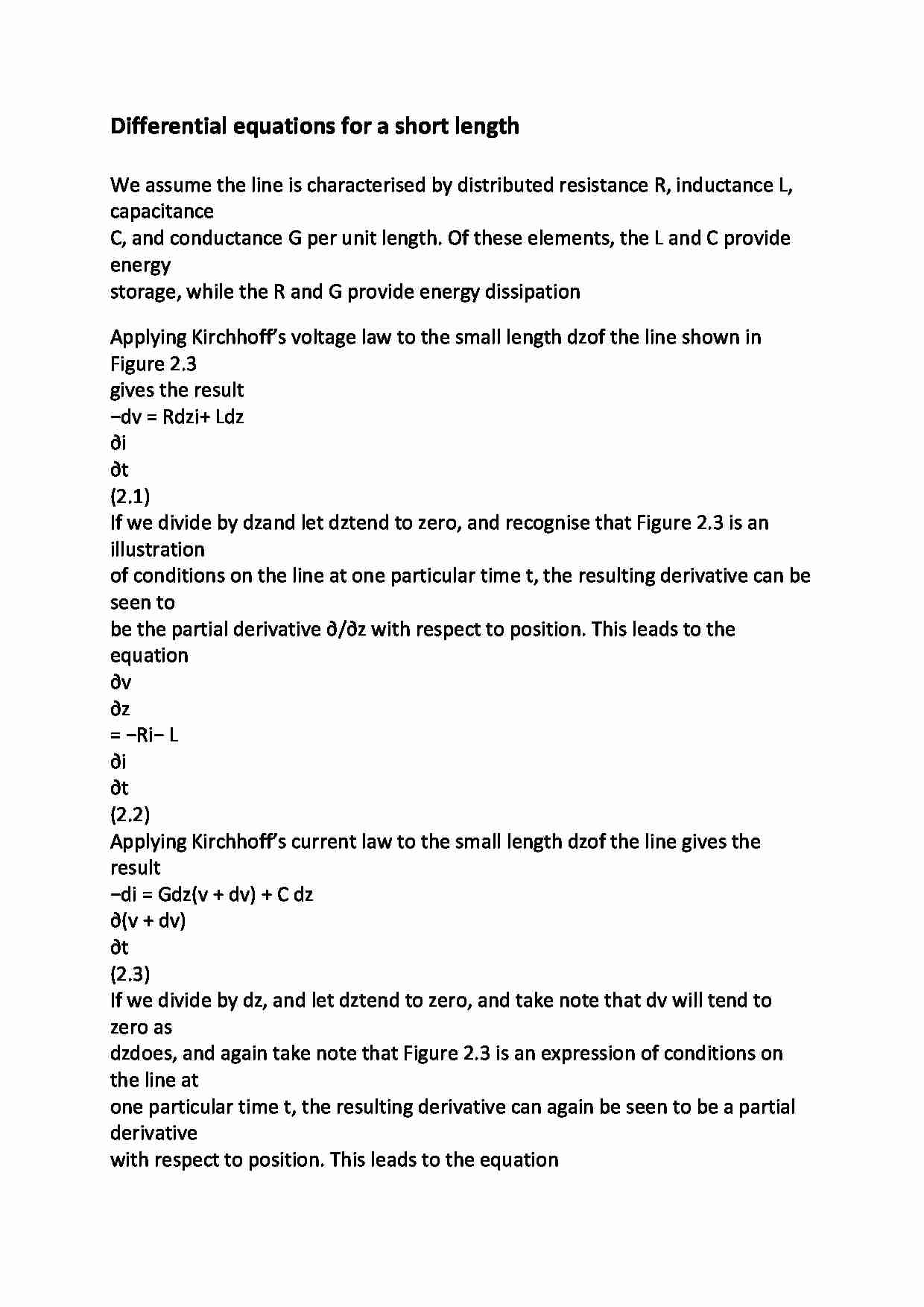To tylko jedna z 2 stron tej notatki. Zaloguj się aby zobaczyć ten dokument.
Zobacz
całą notatkę


Di ff erential equations for a short length We assume the line is characterised by distributed resistance R, inductance L, capacitance
C, and conductance G per unit length. Of these elements, the L and C provide energy
storage, while the R and G provide energy dissipation
Applying Kirchhoff's voltage law to the small length dz of the line shown in Figure 2.3
gives the result
−dv = Rdz i + Ldz
∂i
∂t
(2.1)
If we divide by dz and let dz tend to zero, and recognise that Figure 2.3 is an illustration
of conditions on the line at one particular time t, the resulting derivative can be seen to
be the partial derivative ∂/∂z with respect to position. This leads to the equation
∂v
∂z
= −Ri − L
∂i
∂t
(2.2)
Applying Kirchhoff's current law to the small length dz of the line gives the result
−di = Gdz (v + dv) + C dz
∂(v + dv)
∂t
(2.3)
If we divide by dz, and let dz tend to zero, and take note that dv will tend to zero as
dz does, and again take note that Figure 2.3 is an expression of conditions on the line at
one particular time t, the resulting derivative can again be seen to be a partial derivative
with respect to position. This leads to the equation
∂i
∂z
= −Gv − C
∂v
∂t
(2.4)
These basic equations are difficult to solve for non-sinusoidal waves in the general case.
Hence, we will study the particular cases of
• transients on lossless lines; and
• sinusoidal waves on lossy lines.
In each of these cases we obtain solutions of tolerable simplicity and significant utility.
... zobacz całą notatkę




Komentarze użytkowników (0)